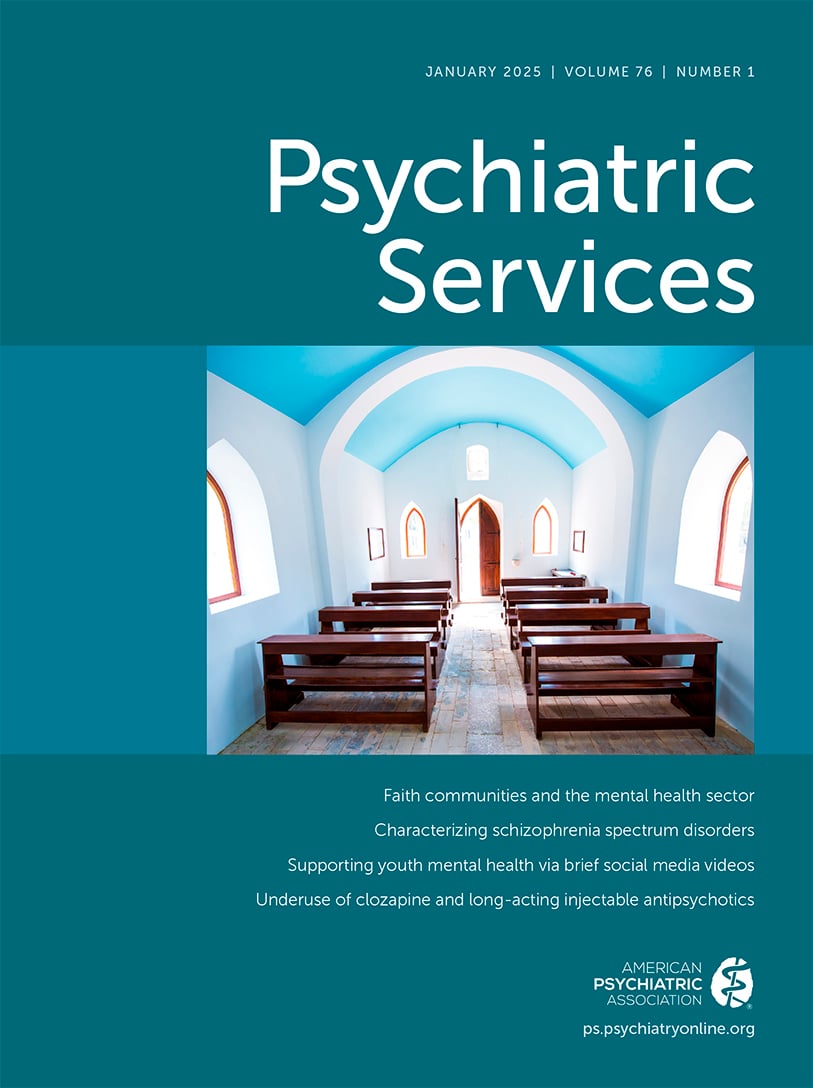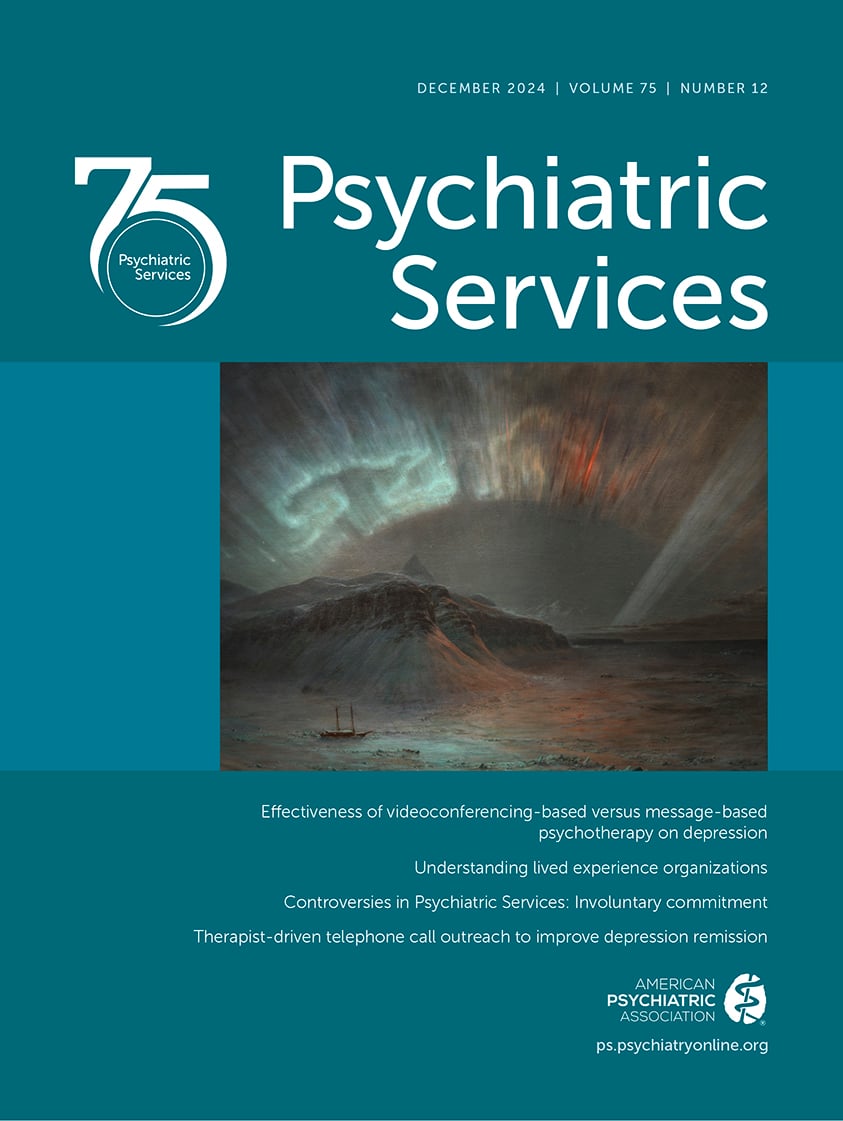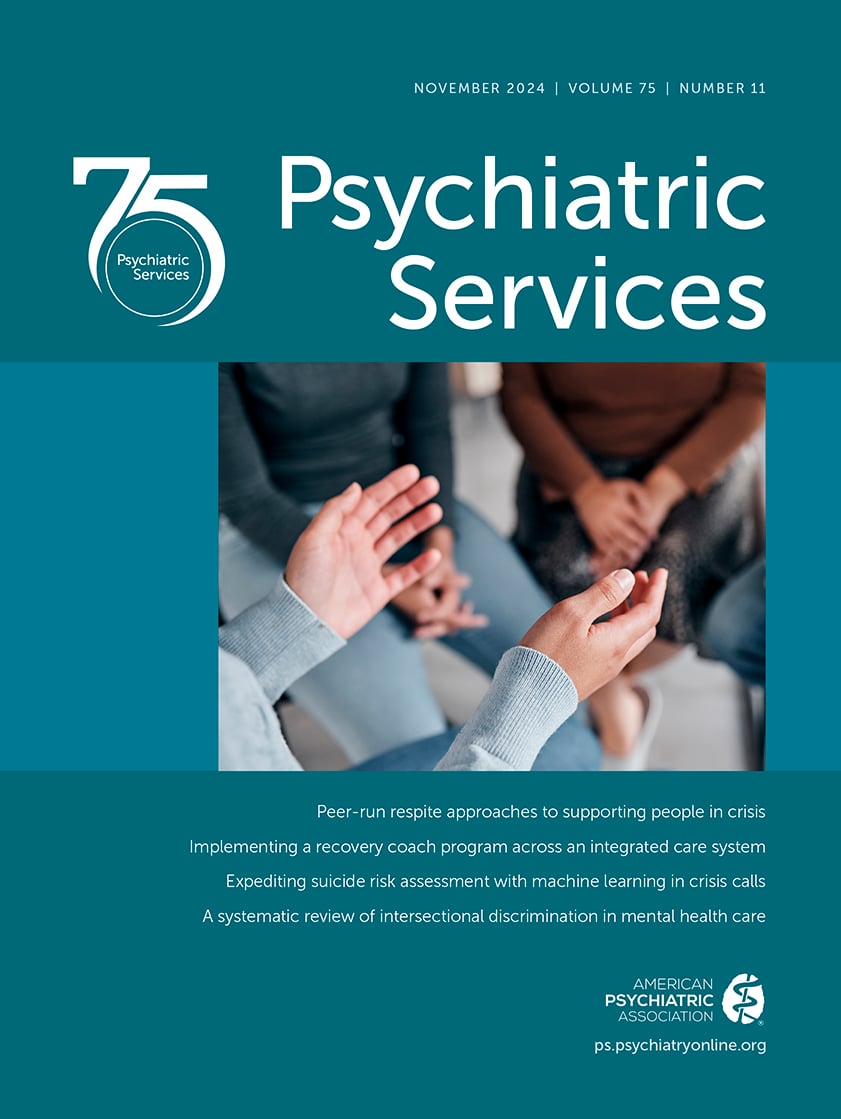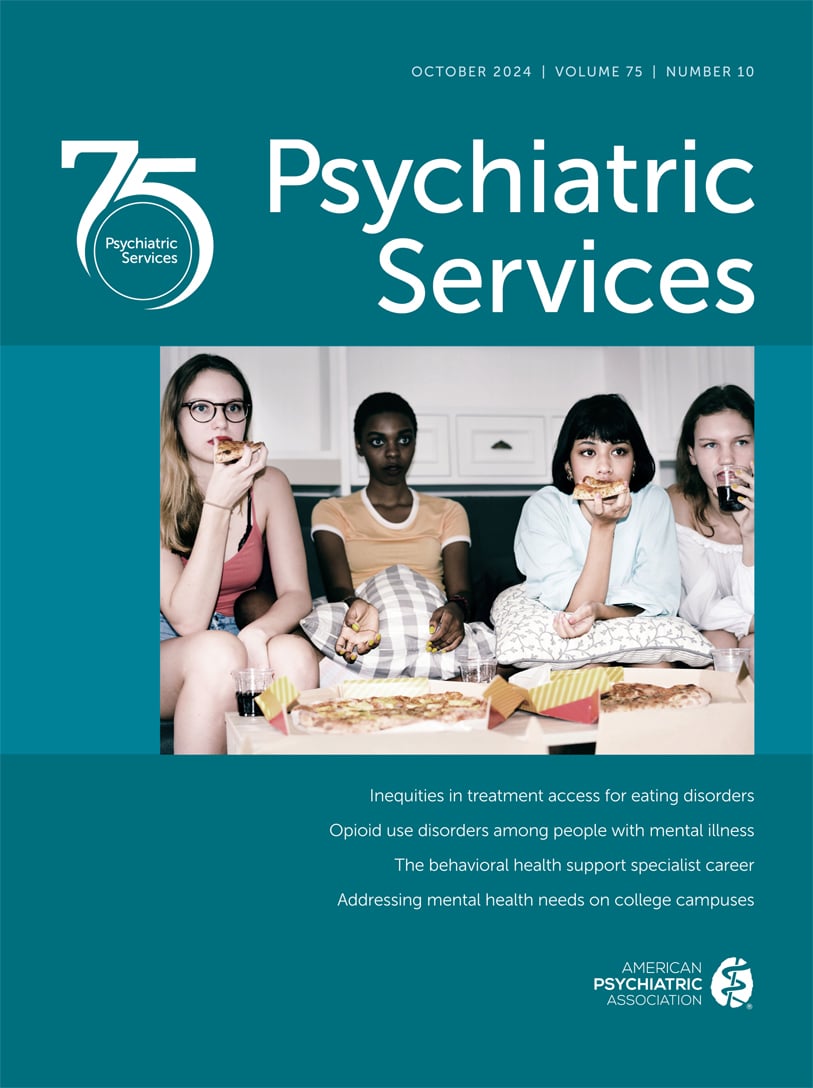Psychiatric Services
- Volume 43
- Number 9
- September 1992
Article
Publication date: 01 September 1992
Pages869–871The individualized plan developed for each client must change, grow, and adapt in response to the client's fluctuating needs. Interventions must focus on desired functional outcomes rather than on diagnosis and symptoms. Intervening on the planning, ...
https://doi.org/10.1176/ps.43.9.869Publication date: 01 September 1992
Pages877–885Studies published since 1988 describing the treatment of schizopbrenia are reviewed. Antipsychotic agents play a dominant role in treatment, but, except for clozapine, no one drug has been proved more effective than any other. Ineffective medication and ...
https://doi.org/10.1176/ps.43.9.877Publication date: 01 September 1992
Pages885–890In an open pilot study, 23 depressed adults infected with human immunodeficiency virus were treated using interpersonal therapy. Twenty subjects recovered from depression after a mean of 16 sessions. The authors discuss six aspects of interpersonal ...
https://doi.org/10.1176/ps.43.9.885Publication date: 01 September 1992
Pages891–894Women now constitute the fastest growing population of persons with AIDS in the U.S. The psychosocial problems of women with AlDS and HIV infection are underrecognized, and economic, personal, and social resources to meet their needs are often inadequate. ...
https://doi.org/10.1176/ps.43.9.891Publication date: 01 September 1992
Pages895–899To explore whether intensive case management would reduce discharged psychiatric inpatients' rates of rehospitalization and increase their use of out patient ambulatory care services, the authors assigned 435 patients discharged from a public general ...
https://doi.org/10.1176/ps.43.9.895Publication date: 01 September 1992
Pages899–903Eighty-three adults with severe mental disabilities participated in a study examining effects on life satisfaction of having nothing to do, receipt of a housing subsidy, and enrollment in an intensive case management program. The clients were divided into ...
https://doi.org/10.1176/ps.43.9.899Publication date: 01 September 1992
Pages904–908A total of 196 nonspecialty state hospitals in the U.S. each identified one patient—referred to as the hospital's "worst" recidivist—admitted to the hospital in 1 987 who bad the most lifetime admissions to that hospital. Persons admitted for mental ...
https://doi.org/10.1176/ps.43.9.904Publication date: 01 September 1992
Pages909–911Clozapine treatment for schizopbrenic patients living in the community requires strategies to ensure safe use of the medication and to foster patients=' emerging social and living skills. The authors describe a clozapine treatment program in a community ...
https://doi.org/10.1176/ps.43.9.909Publication date: 01 September 1992
Pages912–914Analysis of data from 82 Veterans Affairs medical centers showed that during a one-year period in 1987-88, VA psychiatric inpatients spent about 240,000 hours in seclusion or restraint, with about half of that time in mechanical restraints. The median ...
https://doi.org/10.1176/ps.43.9.912Publication date: 01 September 1992
Pages915–919Many patients, especially those who are elderly and who have chronic medical illnesses, choose to forgo cardiopulmonary resuscitation (CPR) in case of cardiac arrest. The right of mentally competent patients to refuse CPR is supported by ethicists, the ...
https://doi.org/10.1176/ps.43.9.915Publication date: 01 September 1992
Pages920–923Minimal architectural changes in a treatment environment can lead to significant improvements in bow the setting functions, with positive effects for staff patients, and families. When a mental health center located in an antiquated hospital in Jerusalem ...
https://doi.org/10.1176/ps.43.9.920Publication date: 01 September 1992
Pages924–927Clinical decision making in the treatment of families of individuals with prolonged mental illness can be affected by countertransference that is stimulated by the context of treatment as well as by the family being treated. For clinicians, ...
https://doi.org/10.1176/ps.43.9.924Past Issues
View Issues Archive
Vol. 76 | No. 1

Vol. 75 | No. 12

Vol. 75 | No. 11
